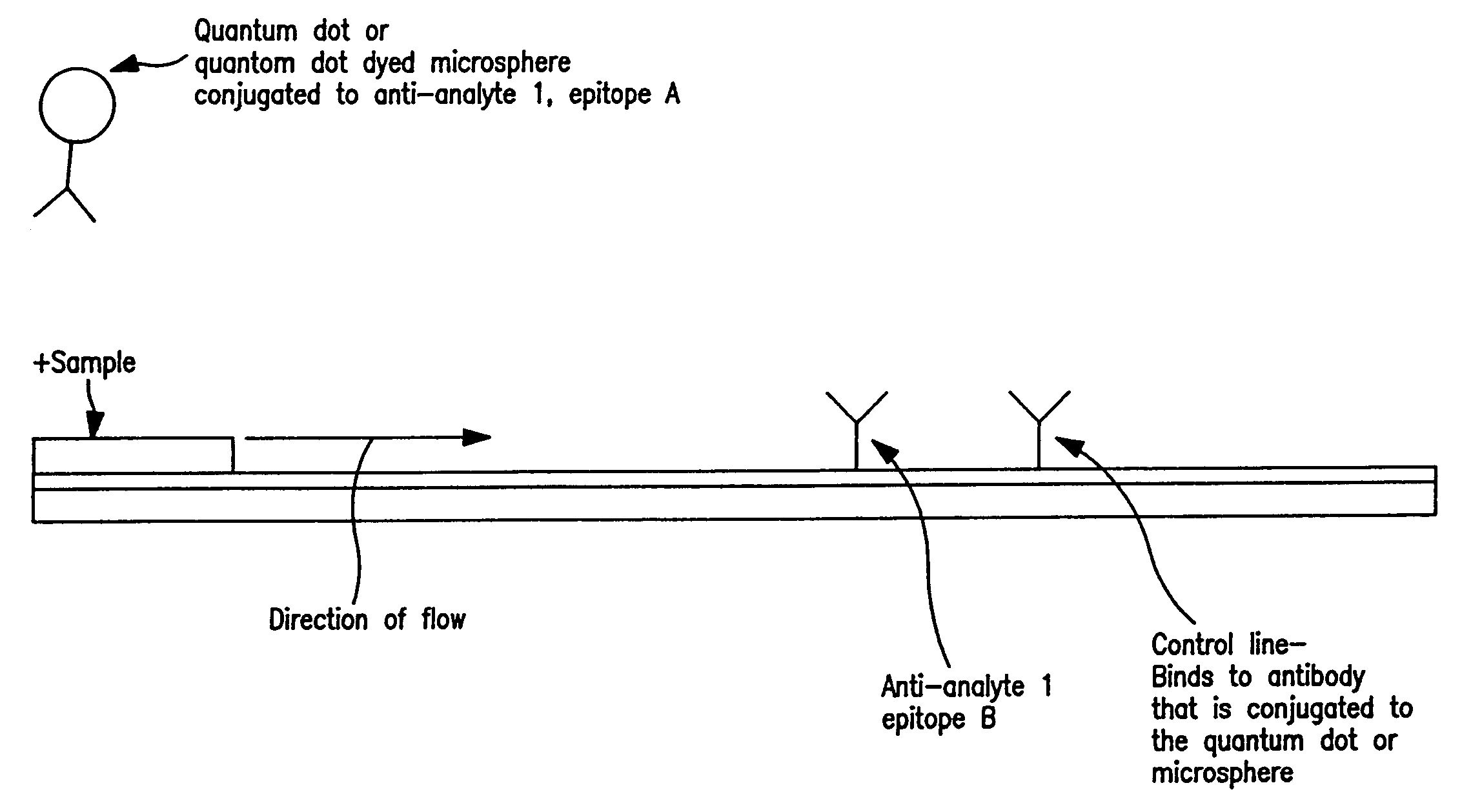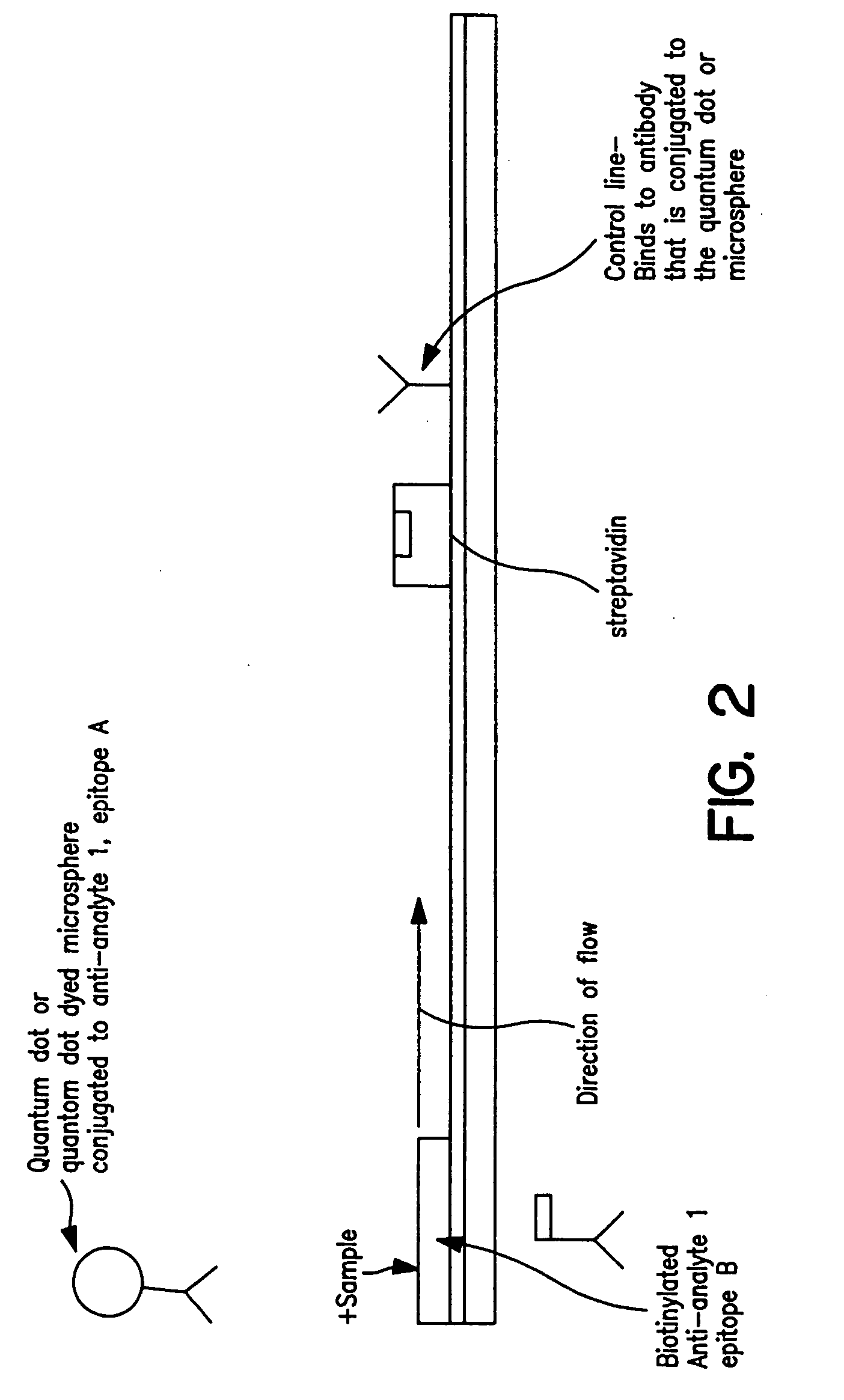Immunochromatographic methods for detecting an analyte in a sample which employ semiconductor nanocrystals as detectable labels
a technology of semiconductor nanocrystals and analytes, applied in the field of immunochromatographic test strips, can solve the problems of reducing the convenience of tests using these labels, colloidal particle-labeled specific binding materials are highly susceptible to aggregation, and the results are at best semi-quantitative, so as to achieve high resolution, improve detection efficiency, and improve the effect of detection efficiency
- Summary
- Abstract
- Description
- Claims
- Application Information
AI Technical Summary
Benefits of technology
Problems solved by technology
Method used
Image
Examples
example 1
Binding of 563 nm Emission Semiconductor Nanocrystals to the Capture Region of a Nitrocellulose Strip
[0240] Detection complexes localized in the capture area of a nitrocellulose test strip are capable of generating a fluorescence signal of an intensity that significantly exceeds background.
[0241] 10 μl of a 1 μM solution of semiconductor nanocrystals was suspended in PBS and 250 μl was applied to the reagent pad of a nitrocellulose membrane (10 μM pore size) having streptavidin immobilized in the capture zone (Roche Diagnostics, Indianapolis, Ind.). The nanocrystals were allowed to wick through the nitrocellulose and become non-specifically bound to the streptavidin capture line. The accumulation was observed using a ZEISS® 25CFL fluorescent microscope (Carl Zeiss, Germany).
[0242] The amount of non-specifically bound nanocrystals present at the capture line was then quantified by-exciting the capture line and the surrounding nitrocellulose membrane using a 488 nm argon ion laser ...
PUM
| Property | Measurement | Unit |
|---|---|---|
| size distribution | aaaaa | aaaaa |
| diameter | aaaaa | aaaaa |
| diameter | aaaaa | aaaaa |
Abstract
Description
Claims
Application Information
 Login to View More
Login to View More - R&D
- Intellectual Property
- Life Sciences
- Materials
- Tech Scout
- Unparalleled Data Quality
- Higher Quality Content
- 60% Fewer Hallucinations
Browse by: Latest US Patents, China's latest patents, Technical Efficacy Thesaurus, Application Domain, Technology Topic, Popular Technical Reports.
© 2025 PatSnap. All rights reserved.Legal|Privacy policy|Modern Slavery Act Transparency Statement|Sitemap|About US| Contact US: help@patsnap.com



